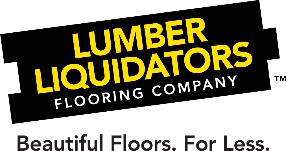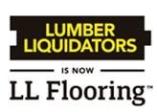in the Superior Court of California, County of Alameda on March 6, 2020, on behalf of all current and former Lumber Liquidators employees employed as non-exempt employees. The complaint alleges violation of the California Labor Code including, among other items, failure to pay minimum wages and overtime wages, failure to provide meal periods, failure to permit rest breaks, failure to reimburse business expenses, failure to provide accurate wage statements, failure to pay all wages due upon separation within the required time, and engaging in unfair business practices (the “Savidis matter”). On or about May 22, 2020, the Savidis Plaintiffs provided notice to the California Department of Industrial Relations requesting they be permitted to seek penalties under the California Private Attorney General Act for the same substantive alleged violations asserted in the Complaint. The Savidis Plaintiffs seek certification of a class action covering the prior four-year period prior to the filing of the complaint to the date of class certification (the “California Employee Class”), as well as a subclass of class members who separated their employment within three years of the filing of the suit to the date of class certification (the “Waiting Time Subclass”). The Savidis Plaintiffs did not quantify any alleged damages but, in addition to attorneys’ fees and costs, seek statutory penalties, unspecified amounts for unpaid wages, benefits, and penalties, interest, and other damages.
The Company disputes the Savidis Putative Class Employees’ claims and intends to defend the matter vigorously. Given the uncertainty of litigation, the preliminary stage of the case and the legal standards that must be met for, among other things, class certification and success on the merits, the Company cannot estimate the reasonably possible loss or range of loss, if any, that may result from this action and therefore no accrual has been made related to this. Any such losses could, potentially, have a material adverse effect, individually or collectively, on the Company’s results of operations, financial condition and liquidity.
KramerVisnack Lawsuit
In November 2017, Robert J. Kramer,On June 29, 2020, Michael Visnack, on behalf of himself and all others similarly situated (collectively, the “Kramer“Visnack Plaintiffs”) filed a purported class action lawsuit in the Superior Court of California, County of SacramentoSan Diego, on behalf of all current and former store managers, alland others with similar job functions and/or titles and all current and former employees classified as non-exempt or incorrectly classified as exempt and who worked for the Company in the State of California (collectively, the “CSM Employees”) allegingsimilarly situated. The Complaint alleges violation of the California Labor Code including, among other items, failure to pay wages and overtime, wage statement violations, meal and rest break violations, unpaid reimbursements and waiting time, and engaging in unfair business practices (the “Kramer“Visnack matter”). The KramerVisnack Plaintiffs seek certification of the CSM Employees for a class action covering the prior four-year period prior to the filing of the complaintbeginning September 20, 2019, through the dispositiondate of this action for the CSM Employees who currently are or were employed in California (the “California SM Class”). On or about February 19, 2019, the Kramer Plaintiffs filed a first amended complaint adding a claim for penalties under the California Private Attorney General Act for the same substantive alleged violations asserted in the Complaint.Notice of Class Certification, if granted. The KramerVisnack Plaintiffs did not quantify any alleged damages but, in addition to attorneys’ fees and costs, the Kramer Plaintiffsthey seek unspecified amounts for each of the causes of action such as unpaid wages and overtime wages, failure to provide meal periods and rest breaks, payroll record and wage statement violations, failure to reimburse expenses and waiting time, liquidated and/or punitive damages, declaratory relief, restitution, statutory penalties, injunctive relief and other damages.damages.
On September 9, 2019,The Company is evaluating the Company entered into an agreementVisnack Putative Class Employees' claims and intends to settledefend itself vigorously in this matter. Given the Kramer matter, consistent withuncertainty of litigation, the termspreliminary stage of the Memorandum of Understanding previously disclosed bycase and the Company. Under the terms of the settlement agreement, the Company will pay $4.75 million to settle the claims asserted in the Kramer matter (or which could have been asserted in the Kramer matter) on behalf of all current and/or former store managers and store managers in training employed by the Company at any time between November 17, 2013 and September 19, 2019. The settlement agreement was preliminarily approved by the court on September 19, 2019 and a hearing for a final approval has been set for January 17, 2020. The settlement agreement is subject to certain contingencies, including court approval. There can be no assurance that a settlement will be finalized and approved by the court or as to the ultimate outcome of the litigation. If the settlement agreement is not approved by the court, the Company will defend the matter vigorously and believes there are meritorious defenses and legal standards that must be met for, among other things, class certification and success on the merits. Ifmerits, the settlement agreement is not approved byCompany cannot estimate the court, the Kramer matterreasonably possible loss or range of loss, if any, that may result from this action and therefore no accrual has been made related to this. Any such losses could, potentially, have a material adverse effect, individually or collectively, on the Company’s results of operations, financial condition and results of operations. The Company recognized a net charge to earnings of approximately $4.75 million within selling general and administrative expense in its second quarter 2019 financial statements.liquidity.
Antidumping and Countervailing Duties Investigation
In October 2010, a conglomeration of domestic manufacturers of multilayered wood flooring (“Petitioners”) filed a petition seeking the imposition of antidumping (“AD”) and countervailing duties (“CVD”) with the United States Department of Commerce (“DOC”) and the United States International Trade Commission (“ITC”) against imports of multilayered wood flooring from China. This ruling applies to companies importing multilayered wood flooring from Chinese suppliers subject to the AD and CVD orders. The Company’s multilayered wood flooring imports from China accounted for approximately 7%6% and 8%7% of its flooring purchases in 20182019 and 2017,2018, respectively. The Company’s consistent view through the course of this matter has been, and remains, that its imports are neither dumped nor subsidized.

